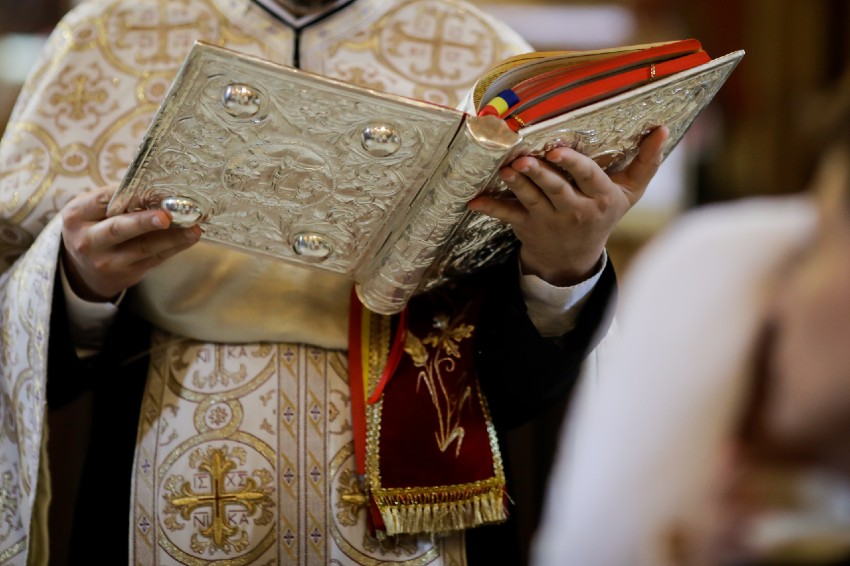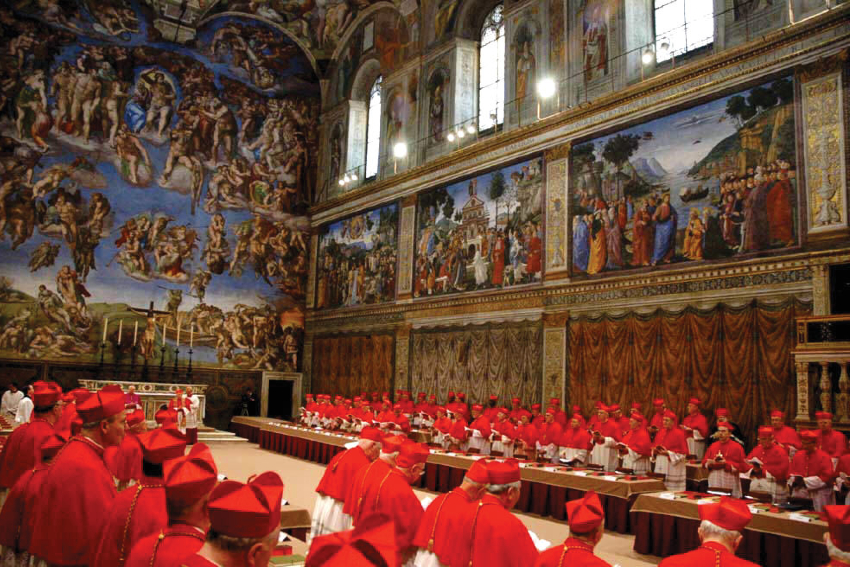June 5, 2017, Monday
The Spirit of the Liturgy: A Commentary
Part One: The Essence of the Liturgy
“If you came this way,
Taking any route, starting from anywhere,
At any time or at any season,
It would always be the same: you would have to put off
Sense and notion. You are not here to verify,
Instruct yourself, or inform curiosity
Or carry report. You are here to kneel
Where prayer has been valid. And prayer is more
Than an order of words, the conscious occupation
Of the praying mind, or the sound of the voice praying.
And what the dead had no speech for, when living,
They can tell you, being dead: the communication
Of the dead is tongued with fire beyond the language of the living.
Here, the intersection of the timeless moment
Is England and nowhere. Never and always.”
—T.S. Eliot in his poem Little Gidding. He is writing about the attitude one must have when one embarks upon a pilgrimage, as we are doing now, or arrives, after any form of travel, at a chapel, a place of prayer, an altar, a place where time and eternity “intersect.” The poem uses the combined image of fire and Pentecostal fire to emphasize the need for purification and purgation. Little Gidding is the fourth and final poem of Eliot’s Four Quartets, a series of poems that discuss time, reality, humanity, and salvation. It was first published in September 1942 after being delayed for over a year because of the air-raids on Great Britain during World War II and Eliot’s declining health. The title refers to a small Anglican community in Huntingdonshire, established by Nicholas Ferrar in the 17th century and scattered during the English Civil War. Here below is an image of St. John’s Church in Little Gidding, England, as rebuilt in 1714
“In the 1920s the suggestion was made that we should understand the liturgy in terms of ‘play’… Now there is some truth in this way of thinking but it is insufficient…” —Joseph Cardinal Ratzinger, The Spirit of the Liturgy, Chapter 1, p. 13
“It was worse than insufficient. It was in a totally wrong direction.” —Notes scribbled by my father in the margin of these words by Ratzinger, showing my father’s sharp disagreement with the cardinal’s judgment on this point
“But this is a mind game. It may explain why the Liturgical Movement led to the virtual destruction of the liturgy.” —Other notes scribbled by my father in the margin of these words by Ratzinger (here below is an image of that page)
Chapter 1
Liturgy and Life: The Place of the Liturgy in Reality
“What is the liturgy? What happens during the liturgy? What kind of reality do we encounter here?” —Opening words of Joseph Cardinal Ratzinger’s The Spirit of the Liturgy, published in 2000
In my memory, there were two worlds I lived in as a boy.
The first was everyday life — playing with my brothers and sisters (I was the oldest), picking and eating wild blueberries in the woods behind our home that extended up for a mile to the old Indian caves above Danielson, falling asleep in a bunk-bed with my brother under a ceiling that shone with little luminescent stars my father had placed there which slowly faded out during the night… Everyday life, summer and winter, rain and rushing water in the street gutters, the elements, the roar of the wind, spam fried in a skillet and Velveeta cheese puffed up on a slice of bread, turning crispy black under the broiler. All of that…
The second was… church.
Sunday Mass.
In those days, the large doorways of St. James opened up onto a space that was, Narnia-like, larger within than was the whole world outside.
That space was lit by candles, and the colored light from stained glass windows, not by the rays of the yellow sun from whence we came.
For inside the church there was no longer time and space, no longer wind and rain, but something else, something… other.
There was the immense space of the communion of the saints, Linus, Cletus, Clement, Sixtus, Cornelius, all of whom were unknown to me, but in some mysterious way closer to me than my own brothers and sisters, Elaine and Ted and Neil and Susan and Richard and Ben… closer to all of us who knelt together in that church, and recited those names. We literally felt closer to those who had lived millennia ago than to those who knelt beside us in the pews, the Chartiers, the Pelletiers, with their 12 and 13 children…
My memories now flee away, leaving only pale glimpses of what were at the time intense, life-molding experiences.
The smell of incense, the bright color red as the blocks of incense caught fire, the rolling, mysterious Latin words, the waiting to shake the bells just at moment of consecration, not too early, not too late… the paradoxes of the Gospels, of this robed figure striding up and down the dusty roads of Palestine, with people reaching out to touch his robe as he passed by…
That is what I remember, in the end — that we were there to reach out too, to reach out for healing, for life, knowing that we were fragile and sick in so many ways, and mortal.
So there sprang up within me, from a very early age, the sense of two worlds, one profane, outside of the church, and one sacred, inside of the church, one filled with tastes and adventures and weather and wind, outside the church, and one filled with solemnity, and an unchanging, ever-repeated ritual, with litanies that recited names that were familiar to me by the time I was five or six, and with stories of healings and raisings from the dead that returned each year, ever the same, even as I grew steadily older.
When I met with Joseph Ratzinger on a number of occasions in the 1980s and 1990s, we spoke about these things. He explained how the Bavarian Catholic liturgy and piety of his youth had shaped his mind and spirit — and how his father’s words had also shaped and directed him.
So when I read my father’s comment in the margin of Ratzinger’s book on the liturgy, my father’s implicit criticism, I nodded with filial piety, though I had come to trust everything Ratzinger wrote with a similar sort of piety, as a mentor, as a spiritual leader and guide.
But in this case, I said to myself, perhaps my father is onto something.
Not that Ratzinger had “bought in” to this concept of the liturgy as a form of “play” (and we will see his position in greater detail in the next letter), but that this concept, which had become a part of the way the liturgists of the Liturgical Movement of the early 20th century conceived of the liturgy, was, in my father’s words, “totally wrong.”
So that there was something “totally wrong” with the entire Liturgical Movement, as sad as that was to think or say.
Because, for us, the liturgy had never been a matter of play, at all, in any way.
No, for us, it had always been a matter of the utmost seriousness and solemnity.
And this I knew, as well, from the sight of my father after communion, when he would kneel for long minutes with his head in his hands, bent in private prayer, in utter silence…
“You are here to kneel,” as T. S. Eliot had put it, “where prayer had been valid.”
(to be continued)









Facebook Comments